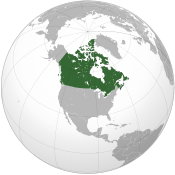Canadian annual seal hunt begins amid controversy
Wednesday, March 25, 2009

Image: Matthieu Godbout.
The Honourable Gail Shea, Minister of Fisheries and Oceans, opened the Canadian seal hunt amid protests by animal rights groups, at a time when bans on seal product imports are becoming more prevalent internationally.
Seal hunters along the coast of Newfoundland and Labrador, and the Gulf of St. Lawrence are allowed to catch a maximum of 270,000 Harp Seal pups from a total estimated population of 5.5 million. 8,200 is the allowable catch of Hooded seals from an estimated population of 600,000, and seal hunters may catch 50,000 grey seals from an approximate population of 300,000.
The Harp seal pups may be killed as soon as they have molted their white pelts, which occurs 10 to 21 days after birth.
It is reported that Russia has shut down the seal hunt on its shores. The United States, Netherlands, and Belgium ban the import of seal products. The European Parliament committee has endorsed a ban on seal product imports by the 27 European Union (EU) member states, in the form of a proposed bill that would still allow the Canadian Inuit to trade in seal products for first nation cultural purposes. All members of the EU must approve the bill for it to become law.
"While we are extremely disappointed that the European Parliament has called for a ban of the trade of seal products, our position remains that any ban on a humanely conducted hunt, such as Canada's, is completely without merit. We will continue to explore all legal and diplomatic options and we will exercise our rights to their fullest extent under international trade laws if and when it becomes necessary and appropriate."
"Sealing is a significant source of income in many small, isolated coastal communities throughout Atlantic Canada, Quebec and the North, and creates critical employment opportunities for processing plants, as well as fuel, food and equipment suppliers in coastal communities," said Minister Shea.
"Our government will continue to defend the rights of Canadian sealers to provide a livelihood for their families through our humane, responsible and sustainable hunt," she said. "It represents as much as 35 per cent of a sealer’s annual income and is important for thousands of families at a time of year when other fishing options are limited at best."
The first area to open up to the seal hunt was the Gulf of St. Lawrence, where 30 percent of the catch is allowed.
Sixteen observer permits have been issued. "The majority of the observers are people who protest against the seal hunt, but there are journalists and other observers as well. We try to make sure there's an even proportion of sealing activity and observer activity," Mr. Jenkins, Department of Fisheries and Oceans spokesman said. The International Fund for Animal Welfare (IFAW) is going to observe and record the commercial seal hunt.
"It's devastating to be here, to know the commercial seal hunt has started again. It's clear that a change is on the horizon with the European Parliament voting on a proposal to ban seal-product trade in the EU and many people in the Canadian sealing industry believe that could spell the beginning of the end of the commercial seal hunt," commented Rebecca Aldworth, director of the Canadian chapter of Humane Society International.
Related news
- "Newfoundland government launches seal hunt website" — Wikinews, March 26, 2007
- "Harp seal hunt approved by Canada, activists call for boycott of Canadian seafood" — Wikinews, March 23, 2005
Sources
- "Canada's controversial annual seal hunt starts" — The China Post, March 24, 2009
- International Fund for Animal Welfare. "Canada's 2009 Commercial Seal Hunt Opens Today - The World Watches as 280,000 Baby Seals Are Set To Die" — Yahoo! Inc., March 23, 2009
- Fisheries and Oceans Canada. "Canadian Harp Seal Hunt Opens Today" — Canada News Centre, March 23, 2009
- Bradley Bouzane. "Seal hunt opens; remains sustainable says Fisheries official" — Canwest News Service, March 23, 2009



